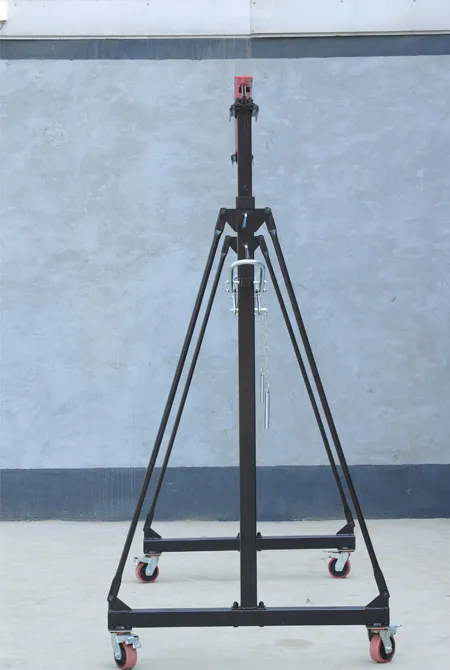Versatile Electromagnetic Lifting Solutions for Efficient Material Handling and Automation
Understanding Switchable Lifting Magnets Innovations in Material Handling
In today’s fast-paced manufacturing and logistics environment, efficient material handling is crucial for operational success. Among the various tools and technologies designed to streamline these processes, switchable lifting magnets have emerged as a significant innovation. These powerful devices enable the efficient transport of ferromagnetic materials, playing a pivotal role in industries ranging from construction to automotive manufacturing.
What Are Switchable Lifting Magnets?
Switchable lifting magnets are devices that use magnetic fields to lift and transport heavy ferromagnetic materials. Unlike traditional lifting magnets, which are often switched on or off using mechanical means, switchable lifting magnets utilize electronic control systems. This allows operators to easily activate or deactivate the magnet’s lifting power with the push of a button.
These magnets consist of a coil through which electric current is passed, creating a magnetic field. When the current flows through the coil, the magnetic field is activated, allowing the magnet to lift heavy steel plates or other ferromagnetic items. When the current is cut off, the magnetic field dissipates, allowing the load to be safely released.
Key Advantages
1. Enhanced Safety Traditional lifting methods can be risky, especially when dealing with very heavy materials. By allowing operators to control lifting and releasing from a distance, switchable lifting magnets minimize the risk of injury, as there’s less physical interaction with the loads being handled.
2. Increased Efficiency The ability to quickly switch the magnetic field on and off enables faster loading and unloading operations. This is particularly beneficial in high-production environments where time is of the essence.
3. Flexibility Switchable lifting magnets can be used on various shapes and sizes of ferromagnetic materials, making them versatile tools in any warehouse or manufacturing space. Whether handling sheets of steel, pipes, or other metallic components, these magnets can be easily adapted to different tasks.
4. Reduction in Manpower By automating the lifting process, companies can reduce the number of workers required for material handling. This not only cuts labor costs but also allows staff to focus on more skilled tasks, improving overall productivity.
switchable lifting magnets

5. Energy Efficiency Many modern switchable lifting magnets are designed with energy efficiency in mind. They can operate on lower power settings while maintaining sufficient lifting strength, which contributes to lower operational costs.
Applications Across Industries
Switchable lifting magnets have applications across various sectors
- Manufacturing In the manufacturing sector, these magnets are invaluable for transporting components from one production phase to another, such as moving steel plates to fabrication stations effortlessly. - Warehousing In warehouses, switchable lifting magnets can be employed to quickly load and unload heavy pallets or stacks of metal without the need for forklifts or other heavy machinery.
- Construction In the construction industry, materials such as steel beams and rebar can be efficiently transported on-site. The ability to release materials precisely and safely enhances overall workflow.
- Automotive Car manufacturers frequently use switchable lifting magnets for assembling various components, contributing to streamlined production lines and reduced assembly time.
Future Developments
As technology advances, the future of switchable lifting magnets looks promising. Innovations such as improved materials, enhanced control systems, and connectivity (IoT capabilities) are expected to make these devices even more efficient and user-friendly. Integration with automated systems and robots will likely lead to more intelligent factories where lifting operations are seamlessly incorporated into overall production workflows.
Conclusion
Switchable lifting magnets represent a significant advancement in material handling technology. Their efficiency, safety, and versatility make them an essential tool in various industries. As businesses continue to seek means of optimizing operations, the adoption of such innovative solutions is likely to rise, paving the way for more agile and responsive manufacturing and logistics processes. The continued evolution of lifting magnets will undoubtedly play a critical role in shaping the future of material handling equipment.
-
Unlock Seamless Relocation with Our Heavy Equipment Moving ExpertiseNewsJun.06,2025
-
Unleash Unrivaled Flexibility with Our Adjustable Gantry CraneNewsJun.06,2025
-
Unleash Heavy-Duty Efficiency with Our Industrial Gantry Crane SolutionsNewsJun.06,2025
-
Revolutionize Steel Handling with Our Magnetic Lifter RangeNewsJun.06,2025
-
Master Equipment Mobility with Premium Machinery Mover SolutionsNewsJun.06,2025
-
Elevate Your Material Handling with Magnetic Lifter TechnologyNewsJun.06,2025
-
YS Permanent Lifting Magnets: The Smarter Way to Handle SteelNewsMay.22,2025
